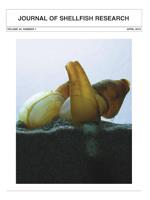Geoduck (Panopea globosa and Panopea generosa) fisheries regulations in the Gulf of California and Baja California Peninsula, Mexico, are based on a minimum legal size (shell length, 130 mm), limited bed harvests with densities greater than 0.4 geoduck/m2, maximum allowable catch, and restrictions on fishing activity on identified beds. Data on age structure and growth rate for geoducks could greatly improve fisheries management in the region; however, variability in size-at-age data for geoducks has made it difficult to develop a sound management strategy, and the presence of outliers in the data have influenced parameter estimates significantly. Different probability density functions can be applied as fat-tail distributions in mixture probability distributions. In the current study, outlier effects on candidate growth models in P. globosa were analyzed, as well as model performance when parameters were estimated using a two-component mixture probability distribution function. The best candidate growth model was selected based on the Akaike information criterion (AIC) and the Bayesian information criterion (BIC). Results suggest that growth models analyzed yielded an estimated asymptotic length larger than 160 mm in shell length. The logistic growth model was selected following the AIC, whereas the von Bertalanffy growth model was based on the BIC. A lack of congruence between the two statistics indicated insufficient evidence in P. globosa size-at-age data to support a best candidate growth model. It is suggested that growth compensation (when cohort size-at-age variability decreases with time or age) was operating in the population evaluated. Consequently, the size-at-age data were more scattered for younger individuals compared with older ones.
How to translate text using browser tools
1 March 2015
Selection of Models to Predict Panopea globosa Growth: Application of a Mixture Probability Distribution Function
Enrique Morales-Bojórquez,
Eugenio Alberto Aragón-Noriega,
Hugo Aguirre-Villaseñor,
Luis E. Calderon-Aguilera,
Viridiana Y. Zepeda-Benitez
ACCESS THE FULL ARTICLE

Journal of Shellfish Research
Vol. 34 • No. 1
March 2015
Vol. 34 • No. 1
March 2015
growth models
outliers
Panopea globosa
size at age
two-component mixture distribution function




